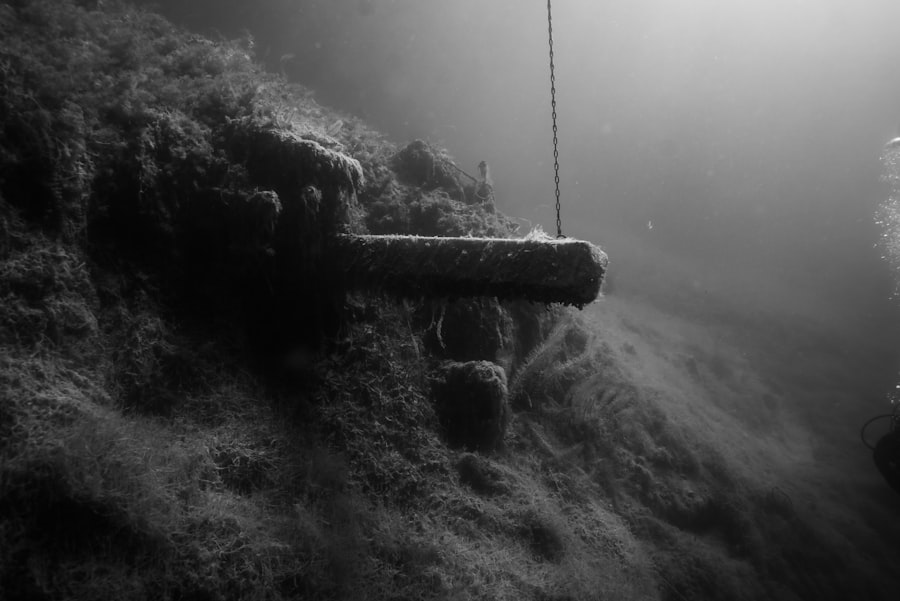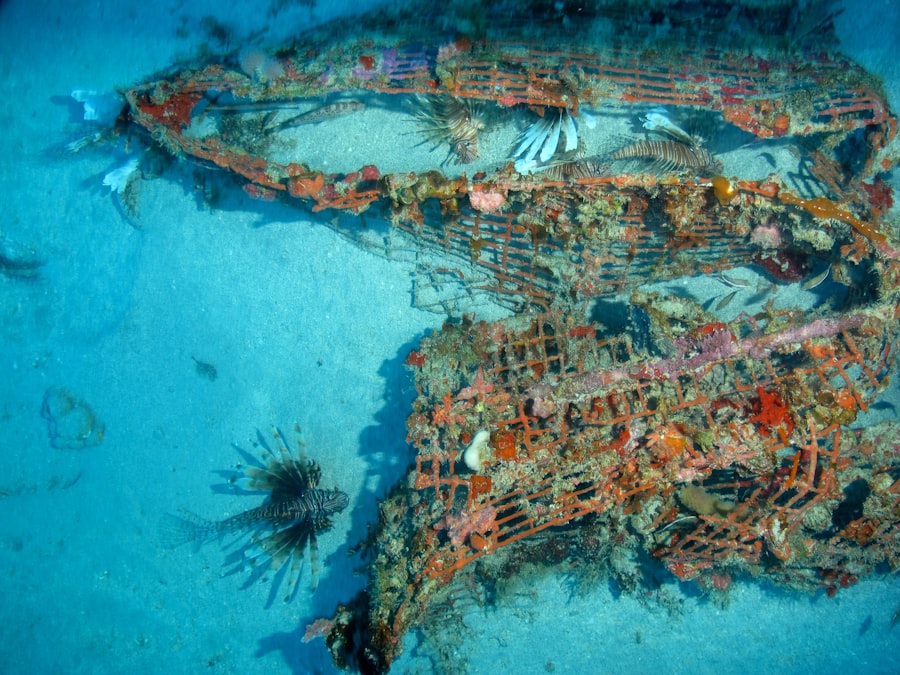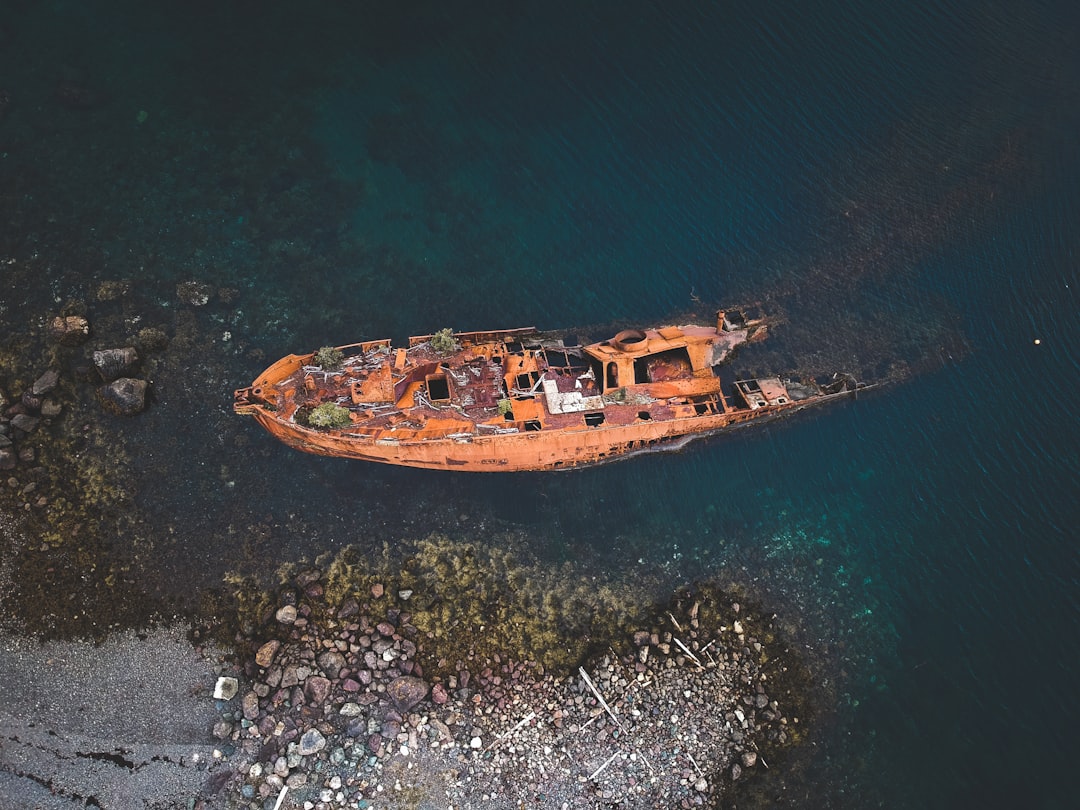The Antikythera Shipwreck, one of the most significant underwater archaeological sites in history, dates back to around 60 BCE. Discovered off the coast of the Greek island of Antikythera, this ancient wreck is believed to have belonged to a merchant vessel that sank while en route from the eastern Mediterranean to Rome. The ship was laden with a treasure trove of artifacts, including statues, pottery, and the enigmatic Antikythera Mechanism, which has puzzled scholars and scientists for over a century.
The shipwreck serves as a time capsule, offering a glimpse into the maritime trade and technological prowess of the ancient world. The historical context surrounding the Antikythera Shipwreck is rich and complex. During the Hellenistic period, trade flourished across the Mediterranean, connecting various cultures and economies.
The ship’s cargo reflects this vibrant exchange, showcasing the artistic and technological achievements of the time. The discovery of the wreck not only sheds light on ancient trade routes but also highlights the sophistication of maritime technology in antiquity. As researchers continue to study the site, they uncover new layers of history that deepen our understanding of this remarkable period. Here is the link to the Antikythera Mechanism documentary: Antikythera Mechanism documentary.
Key Takeaways
- The Antikythera Shipwreck is a famous ancient shipwreck located off the coast of the Greek island of Antikythera.
- The shipwreck was discovered in 1900 by Greek sponge divers, who found a treasure trove of ancient artifacts, including the mysterious Antikythera Mechanism.
- The Antikythera Shipwreck is important because it provides valuable insights into ancient seafaring, trade routes, and maritime technology.
- The Antikythera Mechanism is a complex and enigmatic artifact found among the wreckage, believed to be an ancient analog computer.
- Excavations of the Antikythera Shipwreck have yielded a wealth of artifacts, including statues, jewelry, pottery, and other items from the ancient world.
The Discovery of the Antikythera Shipwreck
The discovery of the Antikythera Shipwreck occurred in 1900 when a group of sponge divers stumbled upon the site while diving in search of sponges. Led by Captain Dimitrios Kontos, these divers were initially unaware of the historical significance of their find. As they explored the underwater landscape, they began to recover various artifacts, including bronze and marble statues, pottery fragments, and other treasures.
The excitement surrounding the discovery quickly attracted the attention of archaeologists and scholars, leading to further investigations. In 1901, a formal excavation was organized by the Greek government, with the assistance of renowned archaeologist Valerios Stais. This expedition marked the beginning of systematic underwater archaeology, as divers employed rudimentary techniques to explore the wreck site.
The discovery set off a wave of interest in underwater archaeology and established Antikythera as a focal point for future research.
The Importance of the Antikythera Shipwreck

The Antikythera Shipwreck holds immense importance for historians and archaeologists alike. It serves as a critical link to understanding ancient maritime trade and cultural exchange in the Mediterranean. The artifacts recovered from the site provide invaluable insights into the economic interactions between different civilizations during a time when trade was essential for survival and prosperity.
By studying these artifacts, researchers can piece together the intricate web of relationships that existed among ancient societies. Moreover, the shipwreck is significant for its contribution to our understanding of ancient technology. The Antikythera Mechanism, in particular, has garnered considerable attention due to its complexity and sophistication.
Often referred to as the world’s first analog computer, this device demonstrates that ancient civilizations possessed advanced knowledge of astronomy and mechanics long before similar technologies emerged in later periods. The implications of this discovery challenge previously held notions about technological development in antiquity and highlight the ingenuity of ancient engineers.
The Antikythera Mechanism: A Mysterious Artifact
| Aspect | Details |
|---|---|
| Artifact Name | The Antikythera Mechanism |
| Origin | Discovered in the Antikythera shipwreck off the coast of the Greek island Antikythera |
| Age | Estimated to be from around 100-150 BCE |
| Function | Believed to be an ancient analog computer used to predict astronomical positions and eclipses |
| Complexity | Contains at least 30 intricate bronze gears |
| Significance | Considered one of the most important archaeological discoveries |
The Antikythera Mechanism stands out as one of the most intriguing artifacts recovered from the shipwreck. Composed of a series of bronze gears and dials, this device was designed to predict astronomical positions and eclipses for calendrical and astrological purposes. Its complexity is unparalleled in ancient history, leading many scholars to speculate about its origins and intended use.
The mechanism’s intricate design suggests that it was not merely a scientific instrument but also a reflection of the cultural and intellectual pursuits of its time. Research into the Antikythera Mechanism has revealed that it was capable of calculating lunar phases, solar cycles, and even predicting eclipses with remarkable accuracy. This level of sophistication indicates that ancient Greeks possessed advanced mathematical knowledge and an understanding of celestial mechanics that was not replicated until centuries later.
The ongoing study of this artifact continues to yield new insights into its construction and functionality, further solidifying its status as a marvel of ancient engineering.
The Excavation of the Antikythera Shipwreck
The excavation process at the Antikythera Shipwreck has evolved significantly since its initial discovery in 1900. Early efforts were hampered by limited technology and knowledge about underwater archaeology. Divers used basic equipment and techniques, often working under challenging conditions to recover artifacts from depths reaching over 40 meters.
Despite these obstacles, their dedication led to remarkable discoveries that would shape future archaeological practices. In recent years, advancements in technology have revolutionized underwater excavation methods at the site. Modern techniques such as remote-operated vehicles (ROVs) and advanced sonar mapping have allowed archaeologists to explore previously inaccessible areas of the wreck.
These innovations have not only enhanced recovery efforts but also provided a more comprehensive understanding of the ship’s structure and cargo. As excavations continue, researchers are optimistic about uncovering additional artifacts that could further illuminate the history surrounding this extraordinary shipwreck.
The Artifacts Recovered from the Antikythera Shipwreck

The artifacts recovered from the Antikythera Shipwreck are diverse and significant, reflecting the rich cultural tapestry of the Hellenistic period. Among the most notable finds are exquisite bronze statues, including a life-sized statue believed to represent a young man known as “the Ephebe.” These sculptures exemplify the artistic mastery of ancient Greek craftsmen and provide insight into their aesthetic values. In addition to sculptures, numerous pottery fragments have been unearthed from the site, showcasing various styles and techniques used by ancient potters.
These ceramics offer clues about daily life in antiquity, including dietary practices and trade relationships with other cultures. Furthermore, items such as coins and jewelry have been recovered, each telling its own story about commerce and social status during this vibrant era. Collectively, these artifacts contribute to a deeper understanding of ancient society and its interconnectedness across regions.
The Significance of the Antikythera Shipwreck for Archaeology
The significance of the Antikythera Shipwreck extends beyond its individual artifacts; it represents a turning point in archaeological methodology and underwater exploration. Prior to its discovery, underwater archaeology was largely uncharted territory, with few systematic approaches to studying submerged sites. The successful recovery of artifacts from Antikythera laid the groundwork for future underwater excavations and established best practices for preserving delicate materials found in marine environments.
Moreover, the shipwreck has inspired a new generation of archaeologists to explore submerged sites around the world. Its discoveries have prompted researchers to reconsider how they approach maritime archaeology, emphasizing interdisciplinary collaboration between historians, scientists, and engineers. As a result, the Antikythera Shipwreck has become a symbol of innovation in archaeological practice, demonstrating how technology can enhance our understanding of history.
The Technology Used to Explore the Antikythera Shipwreck
The exploration of the Antikythera Shipwreck has benefited immensely from advancements in technology over the past century. Early excavations relied on basic diving equipment and manual labor, limiting researchers’ ability to access deeper areas of the wreck site. However, with the advent of modern technology, underwater exploration has transformed dramatically.
Today, remote-operated vehicles (ROVs) equipped with high-definition cameras allow archaeologists to survey large areas of the wreck without putting divers at risk. These vehicles can navigate challenging underwater terrain while capturing detailed images that aid in documentation and analysis. Additionally, sonar mapping technology has enabled researchers to create three-dimensional models of the wreck site, providing valuable insights into its structure and layout.
This combination of technologies not only enhances recovery efforts but also ensures that artifacts are preserved in situ whenever possible.
The Current State of the Antikythera Shipwreck Site
As of now, the Antikythera Shipwreck site remains an active area of research and exploration. Ongoing excavations continue to yield new findings that contribute to our understanding of ancient maritime practices and technologies. Researchers are particularly focused on uncovering additional artifacts that may provide further context for those already recovered from the site.
Efforts are also underway to protect and preserve the site from environmental threats such as erosion and marine life damage. Conservation initiatives aim to safeguard both recovered artifacts and their original context within the wreckage.
The Antikythera Shipwreck and its Impact on our Understanding of Ancient Seafaring
The Antikythera Shipwreck has had a profound impact on our understanding of ancient seafaring practices. It serves as a tangible reminder of how interconnected ancient civilizations were through trade routes across the Mediterranean Sea. The ship’s cargo reflects not only economic transactions but also cultural exchanges that shaped societies during this period.
Furthermore, studies related to ship construction techniques have emerged from examining the wreckage itself. Researchers have gained insights into how ancient ships were built and navigated, shedding light on maritime technology that facilitated long-distance travel in antiquity. This knowledge contributes significantly to our comprehension of how ancient peoples interacted with their environment and each other through seafaring endeavors.
The Future of the Antikythera Shipwreck: What’s next for this Remarkable Discovery
Looking ahead, the future of research surrounding the Antikythera Shipwreck appears promising as new technologies continue to emerge alongside ongoing excavations at this historic site. Archaeologists remain hopeful about uncovering additional artifacts that could further illuminate aspects of ancient life previously unknown or poorly understood. Moreover, interdisciplinary collaborations between archaeologists, historians, scientists, and engineers will likely play an essential role in future studies related to both artifact recovery and preservation efforts at Antikythera.
As interest in underwater archaeology grows globally, it is expected that more resources will be allocated toward exploring submerged sites like this one—ultimately enriching our collective understanding not only of ancient Greece but also humanity’s shared maritime heritage throughout history. In conclusion, while much has been learned from studying both artifacts recovered from this remarkable shipwreck as well as its broader implications for understanding ancient seafaring practices—there remains much more yet to discover about what lies beneath those waves off Greece’s coast!
The discovery of the Antikythera shipwreck has provided invaluable insights into ancient maritime technology and trade. For those interested in exploring more about the implications of this remarkable find, you can read a related article that delves into the historical context and significance of the artifacts recovered from the site. Check it out here: XFile Findings.
WATCH THIS! The Antikythera Mechanism Is Not Human Tech
FAQs
What is the Antikythera shipwreck discovery?
The Antikythera shipwreck discovery refers to the finding of a sunken ancient Greek ship near the island of Antikythera in 1900. The shipwreck is famous for the discovery of the Antikythera mechanism, an ancient analog computer.
What is the Antikythera mechanism?
The Antikythera mechanism is an ancient Greek analog computer and orrery used to predict astronomical positions and eclipses for calendrical and astrological purposes. It is considered one of the most important archaeological discoveries and is often referred to as the world’s first computer.
What other artifacts were found at the Antikythera shipwreck site?
In addition to the Antikythera mechanism, the shipwreck site yielded a wealth of other artifacts, including bronze and marble statues, jewelry, coins, and pottery. These artifacts provide valuable insights into ancient Greek art, technology, and trade.
What is the significance of the Antikythera shipwreck discovery?
The Antikythera shipwreck discovery is significant for several reasons. It provides a rare glimpse into ancient Greek technology and craftsmanship, particularly through the discovery of the Antikythera mechanism. The artifacts also shed light on ancient trade routes and maritime commerce in the Mediterranean.
What ongoing research is being conducted at the Antikythera shipwreck site?
Ongoing research at the Antikythera shipwreck site includes underwater archaeological excavations, conservation efforts for the recovered artifacts, and scientific analysis of the Antikythera mechanism. Researchers continue to uncover new insights into ancient Greek history, technology, and culture through their work at the site.
